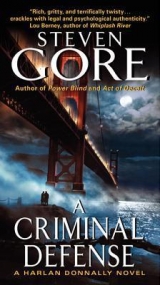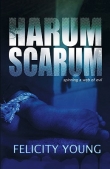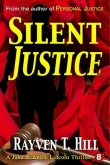
Текст книги "A Criminal Defense: A Harlan Donnally Novel"
Автор книги: Steven Gore
Жанры:
Триллеры
,сообщить о нарушении
Текущая страница: 1 (всего у книги 19 страниц)
A Criminal Defense
A Harlan Donnally Novel
Steven Gore

Dedication
For my dear cousins, Julie Quater, Bruce Kaplan, and Bobbie Chinsky:
kind hearts, great minds, and doers of good deeds
Contents
Dedication
Chapter 1
Chapter 2
Chapter 3
Chapter 4
Chapter 5
Chapter 6
Chapter 7
Chapter 8
Chapter 9
Chapter 10
Chapter 11
Chapter 12
Chapter 13
Chapter 14
Chapter 15
Chapter 16
Chapter 17
Chapter 18
Chapter 19
Chapter 20
Chapter 21
Chapter 22
Chapter 23
Chapter 24
Chapter 25
Chapter 26
Chapter 27
Chapter 28
Chapter 29
Chapter 30
Chapter 31
Chapter 32
Chapter 33
Chapter 34
Chapter 35
Chapter 36
Chapter 37
Chapter 38
Chapter 39
Chapter 40
Chapter 41
Chapter 42
Chapter 43
Chapter 44
Chapter 45
Chapter 46
Chapter 47
Chapter 48
Chapter 49
Chapter 50
Chapter 51
Chapter 52
Chapter 53
Chapter 54
Chapter 55
Chapter 56
Chapter 57
Chapter 58
Note to the Reader
Acknowledgments
About the Author
By Steven Gore
Copyright
About the Publisher
Chapter 1
S ince matter is neither created nor destroyed, in one way or another the world isn’t done with Mark Hamlin.
The words had come to Harlan Donnally as he disconnected the call that wrenched him from sleep at four in the morning. And others had followed as he walked from his bungalow near San Francisco’s Ocean Beach through whorls of fog and mist toward his street-lit truck.
Under ideal conditions, bodies in motion remain in motion and bodies at rest remain at rest.
But it was only now, gazing at the criminal defense attorney hanging by his neck from the Fort Point lighthouse, that Donnally realized these thoughts were reverberations from the last case he’d cleared as a homicide detective a decade earlier. They’d echoed not only in his unease about the uncertainties and entanglements awaiting him in the shadow of the south anchorage of the Golden Gate Bridge, but in his musings about the mechanics of life and death that had accompanied him on the drive through the wooded Presidio to the redbrick garrison and during his three-story climb to the top.
Except the conditions weren’t ideal and Hamlin wasn’t at rest.
Although the fifty-five-year-old lawyer hung just fifteen feet away, Donnally had to squint hard into the darkness to make him out, his mind registering the parts, but not the whole, as an onshore gust spun and rocked the body.
Head tilted down.
Hair matted.
Mouth twisted.
Shirttails fluttering.
Slacks and underwear collected around his ankles, shoe tips scraping the concrete.
Footsteps approaching Donnally from behind emerged out of the rush of swirling salt air. He glanced over at Ramon Navarro as he came to a stop. The homicide detective was cinched inside a trench coat, his head covered by a sheepskin crown cap, his brush-cut hair and rough-cut features familiar enough to Donnally that they didn’t need to be seen to be perceived.
Navarro turned on a flashlight. Donnally grabbed for it, keeping the beam focused down. “Turn it off.”
Navarro waved his free arm toward the diffused and haloed headlights of a patrol car parked a hundred yards away, sealing off Marine Drive and blocking access into the parking lot. “Why’s everybody grinning and telling me to keep the—”
A foghorn blast obliterated his final words.
“You’ll see it in a minute,” Donnally said. “Just wait until your eyes adjust.”
The light died. The wind let up. The duck-squawk of car tires hitting the bridge’s ribbed expansion joints grew louder and a distant siren yelped on the Marin County end of the span.
Navarro looked over at Donnally. “What else did his assistant say other than that he was hanging out here?”
“Just that the call she got was anonymous and muffled.”
“And she reached out to you because . . .”
“Hamlin told her to if something happened to him.”
“Such as . . .” Navarro lifted his chin toward the dead lawyer.
Donnally shrugged. “He didn’t say. She said he was a secretive guy, even with her, so she hadn’t pressed him.”
“And maybe because it would’ve been too long a list since he had so many things to be afraid of.”
“And people.”
“Yeah. Lots and lots of them.”
Navarro glanced over at a fog-shrouded container ship sliding from ocean to bay, then surveyed the thirty-foot lighthouse, from its skeletal legs up to the squat iron tower, then to the dark lantern room, the whole an iron and glass palette of predawn grays.
“Nobody’s paid attention to this thing since the bridge was built,” Navarro said, “except to keep it from turning to rust.” His eyes settled again on Hamlin’s body. “I don’t think this is what they were preserving it for.”
Donnally looked down at the news crews stationed along the rock seawall and then up at a television truck descending Battery East Road, heading toward a spot on the hillside under the anchorage, overlooking the fort.
“What about some crime scene screens to block the view?” Donnally said, and then pointed up at the early morning walkers and joggers gathering along the railing, backlit by the yellow bridge lights and peering down into the shadows. “It’ll be bright enough in a half hour for them to get a good look at him.”
Donnally’s concern was less that they would recognize Hamlin, for they’d watched him over twenty years of nightly news programs and sidewalk commentaries during media-frenzied trials, and more that they and the press would fixate on just one thing and that thing would live forever in Internet videos and in jokes told over cubicle walls and inside police squad rooms.
The wind rose again and rotated Hamlin’s body toward them.
“Son . . . of . . . a . . . bitch.”
Navarro had just spotted it: the dead man’s erection.
“I’ll get the forensic people here as fast as I can,” Navarro said, reaching for his cell phone, “but they’ve been tied up on two gang murders. And I can’t have anybody walking up close or wrapping up the body until we can record whatever is there.”
Navarro made the call and again turned on his flashlight, pointing it down and away from Hamlin. He directed the beam at the feet of a uniformed officer five yards away and then at the television truck, now coming to a stop.
The officer spoke into his radio, and a minute later a patrol car appeared on Battery East, red and blue flashes reflecting off the low clouds and headlights jittering over dips and potholes. It swung in next to the truck and herded it back out.
“He have a wife?” Donnally asked.
“As far as I know he was never married and didn’t have any kids. He had kind of a Boston accent, so his family probably lives back East. I’ve got somebody trying to track them down to let them know before the media does.”
Donnally ducked and reached upward as a gust tore at his baseball cap. He sensed motion to his left as he shoved it into the pocket of his windbreaker, then turned to face San Francisco District Attorney Hannah Goldhagen as she walked up next to him, her neck turtled inside her overcoat collar against the cold and her hands driven deep inside her pockets.
He wasn’t surprised to see her. While some prosecutors wearied and softened by middle age, she’d hardened like hot lava cooling into rock. Donnally knew it would’ve been easy for her to hand this off to an underling who could later be second-guessed and sold out, but he’d called it right. She’d taken it herself.
Goldhagen’s eyes tracked up and down as she scanned the fifteen-foot rope extending from the knot tied at the lighthouse railing to the one at Hamlin’s neck. “I take it it’s too much to hope it’s a suicide.”
The word pushed Donnally’s thoughts back again toward his final homicide investigation at SFPD. Everyone in the Stanford physics department had assumed the professor’s life would end either in murder at the hand of a colleague or in suicide at his own. And after examining the facts and the probabilities, the chains of causation and the body at rest, Donnally had concluded it was the latter.
Donnally pointed at Hamlin’s bound hands as they spun into view. “Not very likely.”
“And a drop that far would’ve snapped his head off,” Navarro said, then looked over at Donnally for confirmation. Their careers in the homicide unit overlapped for a few years before Donnally was shot at thirty-eight and retired out because of his injuries, but Navarro still deferred to Donnally as his senior even though he now had twice as many years in the job.
Goldhagen directed her long, thin arm at Hamlin’s erection. “What do you make of that? Before or after he died?”
Donnally and Navarro shrugged. They’d seen both.
“We’ll have to wait to hear what the medical examiner says,” Navarro said, “but unless there’s Viagra or something like it in his blood, I’m not sure the ME will know for certain.”
Goldhagen turned toward Donnally.
“I spoke to Hamlin’s assistant as I was driving over. She’s saying a week ago he told her to call you if anything happened to him. You know why?”
“Why me? Or why did he make the comment then?”
“Both.”
Donnally spread his hands. “I don’t know the answer to either.”
And Donnally didn’t, at least in any way he could yet articulate. He’d spoken to the man only once since his forced retirement from the department and his moving north to Mount Shasta ten years earlier.
“I heard you helped out a client of his a while back,” Goldhagen said.
“Inadvertently. I needed to find out something that his client knew. Hamlin hired me—”
Goldhagen’s brows furrowed. Hamlin was as warped as Donnally was straight, and he knew she couldn’t imagine him making the kind of moral compromise required for him to work for Hamlin.
And he hadn’t.
“It was only in order to keep what his client told me privileged. The information got me where I needed to go, and also led me down a trail leading to evidence that cleared his client of participating in a murder conspiracy.”
Goldhagen squinted at Donnally, facing him head to head, matching him at five-eleven. He could see the buoy and beacon lights flash in her dark eyes and tint her graying hair red.
“That mean you’re a private investigator now?”
“No. I was just helping out a friend.”
She turned her gaze back toward Hamlin. “You take any money from him?”
“A dollar I later dropped into the employee tip jar at my café.”
“And you haven’t spoken to him since?”
“No reason to. I’m just a guy who flips burgers these days. I was only in town to do some work on my house. My girlfriend still lives there.”
Goldhagen fell silent, her questions answered, her cross-examination ended.
A maverick wave broke hard on the rocks below. Shrieking gulls rose from the top of the lighthouse, then wheeled and fled inland.
“Damn,” Goldhagen finally said, watching a TV satellite truck joining the others parked along Marine Drive. “This is going to be a mess.”
Donnally understood she was speaking past him and to Navarro. None of them needed to say aloud why Hamlin was so hated by law enforcement and why both the public and the legal community would distrust an investigation into his death by SFPD or the DA’s office. Hamlin didn’t win cases so much as sabotage them, all the while accusing the district attorney of judicial fascism and the police of blue-on-black terrorism.
A week earlier Donnally had seen on the news that Hamlin had lined a courtroom hallway with gang members, forcing a rape victim to walk a tattooed gauntlet on her way into court to testify against their leader. Despite her having identified the defendant in both photo and standup lineups during the previous weeks, when the moment came to point him out in court, her hands remained clenched in her lap.
“SFPD starts going through his files,” Goldhagen said, “not only the criminal defense bar, but the state bar, will go haywire.” She pointed at Hamlin. “And not because they had any respect for that asshole.”
Navarro took in a long breath and exhaled. “Give me just ten minutes in his office . . . just ten stinking minutes.”
“You know that’s not going to happen,” Goldhagen said, “as much as I’d like to be in there with you.”
“Then what is gonna happen?” Navarro asked.
“You’ll know as soon as I do,” Goldhagen said, then pulled out her cell phone and walked a few yards away.
The forensic team came striding across the rooftop carrying screens to surround Hamlin’s body. They photographed the scene, collected cigarette butts and food wrappers damp-stuck on the surface around the base of the lighthouse, and then began fixing the barriers in place.
As they worked, Donnally could feel the weight of the city behind him, not just the bluff onto which the bridge was anchored, but the neighborhoods into which Hamlin’s professional roots reached: the politically powerful Castro, the drug and prostitution ground zero of the Tenderloin, the gang-ridden Bayview–Hunters Point, and even downtown into the financial district and out to City Hall and deep into the yuppified Noe Valley and high into the mansions of Nob Hill.
As a cop, Donnally had borne that burden, had never struggled against it, had even sought it, but standing there in the muted dawn, he found he didn’t miss it. Sure there were things he still needed in life and things he was still puzzling out, but he’d learned in the last decade that he didn’t require the gun and the badge to get at them. Even more, the city that had once struck him as a maze or a labyrinth spread over its seven hills now seemed like a web.
Goldhagen returned as Donnally and Navarro were about to step inside the enclosure to examine Hamlin’s body.
“I talked to the presiding judge,” Goldhagen said to Donnally. “He’s appointing you special master. You’ll station yourself in Hamlin’s office and figure out how to pursue leads without jeopardizing attorney-client privilege and you’ll be the public face of the investigation.”
Donnally shook his head. He was still embarrassed to have taken Hamlin’s dollar, viewing it at the time as an evil necessity made for the sake of a greater good. And he wasn’t about to have it made public, an inevitable consequence of his accepting the role as special master. The press would demand to know why he’d been chosen, what his relationship with Hamlin had been, and what motivated Hamlin to ask for his help in death.
Even more, Donnally knew he’d be compromised from the start. Reporters would focus not on the facts relating to why Hamlin had been murdered, but on what it was that Donnally knew—or the press suspected he must know—that intersected with what Hamlin feared in the days before his murder.
Donnally himself didn’t know. And the fact that he didn’t worried him.
“The judge and I will both give you cover,” Goldhagen said.
“I don’t see how that’s possible. You’ll be too busy trying to give yourself cover. I’ll look tainted from the get-go and it’ll slop back on you and the investigation.”
Goldhagen gestured toward the enclosure. “Without you jumping in now, we may not be able to get to the heart of this investigation for days and days.” She glanced at Navarro as if anticipating his disagreement with what she would say next. “I don’t believe in the so-called forty-eight-hour rule. I think it’s bullshit. Especially in this case, with Hamlin’s history and the number of enemies he’s made over the years. But I do believe it’s foolish to give a killer time to wipe away his tracks.”
“Nice try,” Donnally said, “but you’ll have to find someone else. Ask the attorney general to send somebody from Sacramento. I’m not indispensable.”
“No, you’re not,” Goldhagen said. “You’re convenient. His assistant said he left a letter in his desk drawer authorizing you to look at his files. And the shortest distance between two points is a straight line. It would be idiotic to go the long way.”
“Look, man,” Navarro said, turning to face Donnally. “The one thing we know is that Hamlin brought this on himself.”
“That’s a helluva leap,” Donnally said.
Navarro ignored him. “And evidence about how he did it is probably in his office.”
“Probably,” Goldhagen said. “That’s the operative word. And ‘probably’ is not probable cause, and without probable cause there’s material relating to his death in there, we don’t have the basis for a search warrant. Sounds to me like Hamlin trusted you to develop that basis in a way that protects his clients.”
Donnally glanced over at Goldhagen. “You’ve got me confused with somebody else. I have no interest in protecting his clients.”
“Maybe you don’t, but I have to and so does the court—at least until I can get them convicted. Unless we do it by the book, some of them will walk. And the public will rightfully crucify me.”
Navarro made a show of peering at his watch by the diffused light of the cloud-curtained daybreak showing itself behind the East Bay hills.
“The clock is ticking.”
But Donnally knew that’s not what he meant.
The fact was that like Goldhagen, Navarro understood that from this moment, in the small town that was San Francisco, his name would be forever connected to Hamlin’s. And the detective dreaded heading into an investigation into the death of a man he despised while straitjacketed by rules that man had abused in life.
Chapter 2
Dr. Youssef Haddad pointed down at Mark Hamlin’s naked body lying covered by a plastic sheet on the stainless steel gurney in the medical examiner’s autopsy lab.
The two gangsters whose overnight murders had delayed the forensic team’s arrival at Fort Point flanked him. Neither the humming exhaust fan nor the odor of disinfectant could suppress the stench of excrement and urine released from the bodies in death.
“O propheta, certe penis tuus cælum versus erectus est.”
“Sorry?” Donnally glanced over at the pathologist.
“O prophet, thy penis is erect unto the sky.”
“A prophet or the Prophet.”
“The. According to the historian Abulfeda, the Imam Ali proclaimed it upon seeing the corpse of the Prophet Mohammed.”
Donnally had never heard the quote before, but he’d seen the condition a few times while he was with SFPD and the name came back to him. Priapism. In homicide investigation training it had been described as a persistent erection. He couldn’t watch Viagra television commercials without thinking of its other names. When produced after execution by hanging or by strangling, it was called a death erection or angel lust.
Although the Latin words were spoken in neither irony nor sarcasm, Donnally was surprised a Muslim doctor would even mention Mohammed in this context. Maybe he was only trying to say it was so natural even the Prophet was subject to it.
The doctor pursed his lips and said, “Saints and sinners alike can be humiliated, even after death.”
Haddad was one of the few pathologists Donnally had ever met who hadn’t lost or repressed his tragic sense, neither fearing it nor wearing it like a hair shirt.
Donnally nodded toward Hamlin’s body, the sheet tented by his erection. “Premortem or post?”
“The fact that it may be post doesn’t exclude the possibility it began before he died. He might’ve taken an erectile dysfunction medication. The tox results will tell.”
Haddad exposed Hamlin’s head and shoulders.
“But that’s not why I asked you to follow the body over here.”
The swishing double doors announced the arrival of Detective Navarro, now dressed in surgical scrubs. His protective goggles and respirator mask, hanging by elastic straps around his neck, bounced against his chest as he crossed the room.
Navarro nodded at Donnally as he walked up, and then grinned and said to Haddad, “Nothing like a little slice and dice in the morning.”
The detective hadn’t rubbed his hands together, but had nonetheless sounded to Donnally as though he was about to sit down in front of a Denny’s Grand Slam breakfast.
Haddad looked over at Navarro. The doctor wasn’t smiling. His tight mouth communicated his disapproval of those who chose to escape from the horror of violent death into macabre linguistic dances of irony or burlesque.
“That line is getting old,” Haddad said.
In Navarro’s continuing grin, Donnally saw Navarro hadn’t grasped the comment wasn’t directed at the line as much as at Navarro himself.
Haddad gestured with his scalpel toward two ligature marks around Hamlin’s neck. One ran just above his Adam’s apple and circled his neck like a collar. The other looped under his chin and angled upward behind his ears and disappeared into his black hair.
Haddad pointed from one to the other.
“You can tell from the lack of blood in the abrasions in this diagonal one that it occurred after death.”
“You think he was strangled from behind?” Donnally asked. “Then strung up?”
Haddad nodded. “That’s my theory, but we’ll only know for certain after I shave off his hair to look for bruising and after I open him up and examine the back of his head and neck.”
Donnally leaned down to inspect the marks. An undercurrent of lavender flowed beneath the churning stench of cleaning fluid. He glanced at Navarro.
“Smell that.”
Navarro bent over and took a sniff.
“Soap. Some kind of scented soap.” Navarro looked at Donnally as he straightened up and said without a smile, “Smells like somebody washed him off before they hung him out to dry.”
Donnally considered that crack to be Navarro’s second strike. He’d never met a competent homicide detective who made a habit of gallows humor. He’d always found it was the outward expression of a counterproductive kind of imagination, one that tended to take the detective off course, diverting him away from a mental cause-and-effect re-creation of the events that led to the death.
He’d been willing to give Navarro a break because, at least for the moment, sarcasm had been better than his expressing outright the hatred cops felt toward Hamlin, something that might be quoted later and would cast doubt on the integrity of the investigation.
But twice was enough, and he didn’t want to fight Navarro all the way through the case.
Donnally glared at Navarro while holding up two fingers and shaking his head. The detective spread his arms as he raised his eyes toward the ceiling, then looked back and nodded in surrender.
At the same time, Donnally was grateful for that hate, even though it had been sublimated into humor, for it seemed better than the brute reductionism of the medical examiner’s office by which still-warm humans devolved into mere fields of evidence.
Now conscious of the war between the odors of the lab and the aroma of lavender surrounding the body, Donnally realized something didn’t make sense.
“There seems to be a contradiction,” Donnally said. “Someone was rational and methodical enough to destroy evidence by washing him off, but irrational enough to think that the dead could be humiliated by being left hanging half naked in a public place.”
Donnally tensed, ready to be annoyed when Navarro took another sarcastic swing, but he didn’t.
“Unless the humiliation was directed at someone else,” Navarro said. “Maybe as a warning.”
There was a new seriousness in Navarro’s voice, as though he worked his way past the filter of how he’d despised Hamlin in life in order to analyze the manner in which he had died and had been left to be discovered.
“His being dead ought to have been warning enough,” Haddad said. “But then again, my part in the process has less to do with the psychology of homicide and more to do with the pathology of death.” He gestured toward the body. “I only interrogate the dead.”
Donnally looked from Hamlin to Haddad. “And you’re sure it’s saying homicide?”
Haddad pulled off the sheet and pointed at abrasions on Hamlin’s right wrist.
“It certainly crossed my mind that he tied his own hands to keep himself from changing his mind,” Haddad said. “But at least one factor mitigates against that.” He cocked his head toward pieces of a mountain climber’s rope bagged up on top of a utility table. “The knot was in a spot where he couldn’t have tied it.”
“You mean, by himself?”
“Exactly. By himself.”
“So there’s no way it’s suicide?” Navarro asked.
“Not based on this.”
The following silence told Donnally their minds were leading them to the last possibility, that Hamlin’s death might have been a sexual homicide, an unintentional erotic asphyxiation at the hands of a partner.
And when Donnally finally said, “Either he had an enemy or he had a helper,” they all knew what he meant.
As they stood looking at the body, Donnally felt as though Hamlin’s history, outside of just the mechanics of how he’d come to this place, was now catching up to him and was verging on a future that lay in their hands.
Who Hamlin would be in the public mind and how he would live on in his family’s memories might be determined in the next few minutes.
Donnally thought of the reporters waiting in the medical examiner’s lobby, with voice recorders and video cameras ready, waiting to draw conclusions about Hamlin’s life and character from the manner in which he died. Donnally wasn’t a Buddhist, but, for the moment, an anonymous death leading toward eternal oblivion seemed a more preferable route to travel than the path someone had chosen for Hamlin.
Donnally felt Navarro’s eyes on him, as though the detective was saying, You do it. You release it to the press. Tell them about the condition of his body, his angel lust. Prove to the public you have no interest in protecting Hamlin, or at least that saving his reputation wasn’t the reason Hamlin chose you.
He stared back at Navarro, as though to say, You do it. You couldn’t expose Hamlin in life, so take a shot at him now, when he can’t answer, when you’ll have the last word. Prove to the public Hamlin was reckless beyond just the immorality and illegality of his law practice, and all the way beyond the limits of life itself.
Haddad cleared his throat.
Donnally and Navarro both blinked. Neither one was willing to play that game.








